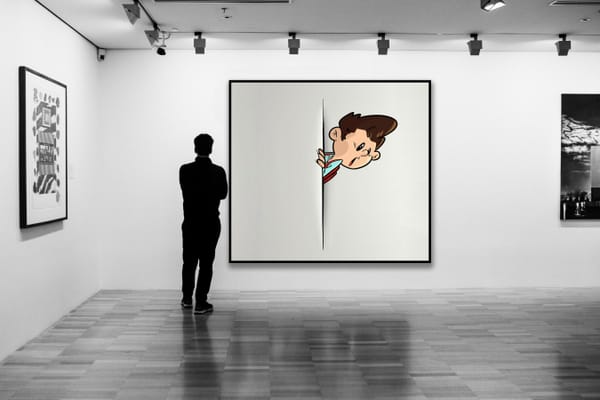The Rise of Eco-Art: How Environmentalism is Shaping Contemporary Art Trends
Discover how environmentalism is influencing contemporary art with the rise of eco-art, a movement focused on sustainability and nature. Explore key trends and influential artists.

In recent years, art has taken on a new role as a powerful voice in the conversation about environmentalism and sustainability. Eco-art, also known as environmental art, has emerged as a movement where artists not only create art inspired by nature but also use their work to raise awareness about ecological issues. With growing concerns over climate change, deforestation, pollution, and biodiversity loss, contemporary artists are increasingly incorporating environmental themes into their work, challenging traditional practices and materials to advocate for sustainability.
In this article, we will explore the rise of eco-art, the key trends driving this movement, and the influential artists shaping its future.
What is Eco-Art?
Eco-art is an umbrella term that refers to any artistic practice that addresses environmental concerns or uses sustainable materials. The central philosophy of eco-art is to inspire ecological awareness and activism through creative expression. These works often focus on the natural world, human impact on ecosystems, and the relationship between humans and nature.
Eco-art can take many forms, including:
- Land Art: Large-scale outdoor works that interact with the natural environment.
- Sculptures and Installations: Using recycled or natural materials to create art that promotes sustainability.
- Multimedia Art: Digital works or videos that document environmental issues.
- Performance Art: Artistic performances aimed at raising awareness about environmental destruction and climate action.
In essence, eco-art goes beyond aesthetics and serves as a form of activism, encouraging viewers to think critically about the planet's future.
The Origins of Eco-Art
While environmental art can trace its roots back to the land art movement of the 1960s and 70s, its modern form has expanded and diversified in response to growing global environmental concerns. Early eco-artists like Robert Smithson and Nancy Holt created large-scale installations that worked with the natural landscape, such as Smithson's famous Spiral Jetty. These works emphasized the connection between art, nature, and the passage of time.
However, as environmental issues such as climate change and habitat destruction became more pressing, contemporary eco-artists have shifted from simply interacting with nature to actively advocating for its preservation. This shift has been fueled by the rise of environmental activism, the sustainability movement, and an increasing awareness of human impact on the planet.
Key Trends in Eco-Art
Eco-art has evolved significantly over the past few decades, and certain trends have emerged as defining characteristics of the movement. Below are some of the key trends shaping eco-art today.
Art Using Recycled and Sustainable Materials
One of the most prominent trends in eco-art is the use of recycled, upcycled, or sustainable materials. Artists are increasingly repurposing waste materials, such as plastic, metal, and glass, to create thought-provoking works that comment on pollution, waste management, and the disposable nature of modern society.
For example, artist El Anatsui creates massive installations using discarded bottle caps and aluminum, transforming trash into intricate, tapestry-like structures that highlight the global waste crisis. By using non-traditional materials, eco-artists are reducing their environmental impact while making a powerful statement about consumerism and waste.
Land Art and Site-Specific Works
Land art remains a central feature of the eco-art movement, with many contemporary artists creating works that interact directly with natural landscapes. These site-specific works are often temporary, designed to change over time as they are exposed to the elements, reinforcing the idea of nature's dominance over human-made structures.
Artists like Andy Goldsworthy and Richard Long create ephemeral works using only materials found in nature, such as rocks, leaves, and branches. Goldsworthy, for example, constructs intricate sculptures that erode or disintegrate over time, symbolizing the transient nature of life and the environment's constant cycle of regeneration and decay.
Art as Environmental Activism
In addition to using sustainable materials and interacting with nature, many eco-artists are engaging directly in environmental activism. Their works not only raise awareness but also call for concrete action on ecological issues, from climate change to deforestation.
One example is Olafur Eliasson, whose work frequently tackles environmental themes. His Ice Watch installation, where blocks of glacier ice were placed in city centers, aimed to bring attention to the rapid melting of polar ice caps due to climate change. Similarly, John Sabraw, known for his Toxic Art series, creates vibrant paintings using pigments derived from polluted river waste, raising awareness about water pollution and restoration efforts.
Influential Eco-Artists
Eco-art has garnered global attention, with numerous artists contributing to the movement's growth and evolution. Below are some of the most influential figures in the eco-art movement today.
Agnes Denes
Agnes Denes is considered one of the pioneers of environmental art. Her most famous work, Wheatfield – A Confrontation (1982), involved planting a two-acre wheat field on a landfill in Lower Manhattan. The juxtaposition of the golden wheat field against the urban skyline symbolized the clash between nature and urban development, making a powerful statement about land use, sustainability, and food production.
Olafur Eliasson
Olafur Eliasson is known for his large-scale installations that explore environmental themes, including climate change and sustainability. His Weather Project (2003) at the Tate Modern created an immersive experience of light and mist, encouraging viewers to reflect on the interconnectedness of humans and the natural world. Eliasson’s work bridges the gap between art and science, making him a key figure in the eco-art movement.
John Sabraw
John Sabraw’s work is notable for its innovative use of environmentally harmful materials. In collaboration with environmental engineers, Sabraw creates paint from toxic runoff in rivers polluted by acid mine drainage. His vividly colored paintings and sculptures highlight the potential to transform waste into something beautiful, while also advocating for environmental cleanup.
Nils-Udo
German artist Nils-Udo is a master of land art, known for creating works that emphasize the fragility and beauty of nature. His sculptures, made from natural materials such as leaves, stones, and flowers, are often temporary, designed to degrade or change with time. Nils-Udo’s work is a meditation on the relationship between humans and the environment, encouraging a deeper appreciation for nature’s impermanence.
The Cultural and Environmental Impact of Eco-Art
Eco-art has had a profound impact on both the art world and society at large. By raising awareness about ecological issues and inspiring environmental action, eco-art has become a bridge between creativity and activism. Artists who engage with environmental themes are not only enriching the cultural landscape but also contributing to the global conversation about sustainability.
In a world increasingly affected by climate change, deforestation, and pollution, eco-artists are playing a crucial role in rethinking our relationship with nature. Through their work, they challenge us to consider how our actions impact the planet and offer innovative solutions for a more sustainable future.
Moreover, eco-art has encouraged a shift within the broader art world toward more sustainable practices. Many galleries and museums are now taking steps to reduce their carbon footprints, and some are even incorporating eco-art into their exhibitions to reflect the growing importance of environmentalism in contemporary culture.
The Future of Eco-Art
As environmental concerns continue to escalate, the role of eco-art is likely to grow even more significant. Contemporary artists will increasingly seek ways to use their work as a platform for environmental advocacy, encouraging sustainable practices and fostering a deeper connection between humanity and nature.
The rise of eco-art reflects a broader cultural shift toward environmental awareness and sustainability. For art lovers, eco-art offers not only aesthetic beauty but also a chance to engage with the urgent issues of our time. Whether through installations made from recycled materials, land art that interacts with the natural world, or activism-centered works that call for change, eco-art is shaping the future of creativity.
ART Walkway News





